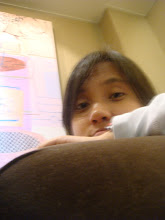3D imagery is of increasing importance in many fields such as biomedicine and computer vision. There are different ways of obtaining the 3D reconstruction of an object. Some of these are stereo vision, structured illumination, 3D from motion and photometric stereo. In photometric stereo, depth is calculated from shadow cues. This is done by capturing images of the objects with the source at different locations. Let V be the matrix describing the x, y and z component of the light source and I be the matrix containing the images of the object at different light source location. The relationship between the source location and a specific location at the surface of the object as seen by the camera is given by,
I = Vg
g can be solved using the least square method and is given by,
 Using g, the normal vector can be calculated by normalizing g. Once the surface normals are estimated, they are related to the surface elevation or the depth z which is here expressed as the function f,
Using g, the normal vector can be calculated by normalizing g. Once the surface normals are estimated, they are related to the surface elevation or the depth z which is here expressed as the function f,
 The depth z is at a point (u,v) in th image of the object is evaluated by a line integral given by,
The depth z is at a point (u,v) in th image of the object is evaluated by a line integral given by,

In this activity, the 3D reconstruction of a sphere was rendered. This was done by capturing images of the sphere at different light source locations. The following figure shows the images of the sphere used.
 Using the equations discussed earlier, the surface normals of the sphere were calculated. The depth z of the object was then calculated and visualized using the plot3d function in Scilab. The obtained reconstruction is shown below.
Using the equations discussed earlier, the surface normals of the sphere were calculated. The depth z of the object was then calculated and visualized using the plot3d function in Scilab. The obtained reconstruction is shown below.
 As can be observe, the reconstruction resembles a sphere. However, it can be observed that there are visible grooves.
As can be observe, the reconstruction resembles a sphere. However, it can be observed that there are visible grooves.
For this activity I give myself a grade of 9. Although I was able to reconstruct the sphere, still I fail to explain the reason for the visible grooves.
I thank Jica Monsanto and Irene Crisologo for useful discussions.
References:
[1] Acitivity 17: Photometric Stereo Manual

No comments:
Post a Comment